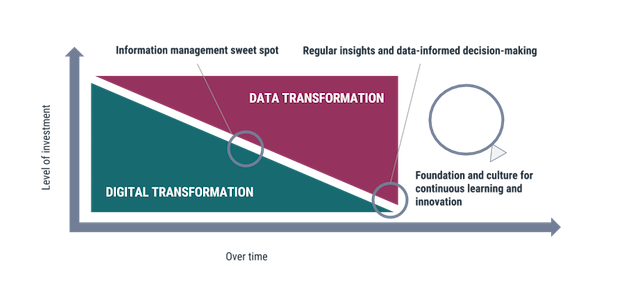The Engine Room's Alix Dunn presents three concepts of social sector transformation and explains how they're connected.
In the technology for social change community, new language and buzzwords come and go. Playing language police isn’t helpful. (Though it can be very funny.) But sometimes oversimplification and conflation of terms can undermine strategic capacity to think critically about the role of data and technology.
Thankfully, there has been considerable pushback on the thinking of technology as a silver bullet. Few people still argue that technology acting alone can solve social problems. That said, I often encounter projects and worldviews that imply that, like a bullet, technology can be put to use in short bursts and to great effect. Sometimes this is true in serendipitous alignments – like Ice Bucket Challenges, effective Twitter coordination in times of crisis and the like.
But using technology and data for social change often requires large, sustained investments of focus and resources to result in lasting change. And that does not happen without fundamental transformation of the organizations who are the primary drivers of that change. In our work we focus not just on project-level data and technology wins, but on the transformation of organizations we work with.
But what do I mean by transformation? I wanted to quickly write up how I define three concepts of transformation, the connections I see between the three, and explain why I think the difference matters.
Three Concepts of Transformation
- Organizational transformation is a large overhaul in the way that a team works. It is fundamentally about people. Transformation happens when buy-in, strategy, and resources align to trigger big shifts in thinking, planning, and doing.
- Digital transformation is an organization-wide capacity to use hardware, software, and online infrastructure to successfully streamline operations and grow engagement with new audiences. It is about internal and external communication infrastructure.
- Data transformation is the organization-wide process of focusing, organizing, and operationalizing consistent collection and use of data that can inform action and assess impact. It is about using structured processes to understand your organization and your cause.
How are digital and data transformation connected?
- Data transformation cannot take place without digital transformation.
- Digital transformation does not guarantee data transformation however.
- Digital transformation can lead to huge gains in operational efficiency, outreach, and community engagement, but without data transformation, there is no way to know if that is the case because there is no evidence to track or analyze these successes.
- Information management is the key benchmark between digital and data transformation.
What is information management? I define it as the process of controlling the information your organization collects, stores, and protects, so it is accessible and searchable for those who need to use it. Information management practices include: fit-to-purpose technology infrastructure for managing information, consistent file-naming conventions, information architecture (i.e. clear folder directories, and other backbones of sorting information consistently), retention policies (when to delete old information), back-up strategies, archives, and responsible data practices.

Why does distinguishing between all of these things matter?
- Recognizing how these transformations work makes it easier for organizations and funders to be patient, think long-term, and invest in core data and technology capacities.
- Taking on both data and digital transformation processes at the same time can be a recipe for disaster for an organization. And if the distinction isn’t clear, that can be hard to avoid.
- Focusing on data transformation before digital transformation can undermine the sustainability of that work, and will also decrease the chances that data insights will be put to use in advocacy or operations.
These types of frames can make it easier to identify patterns and better understand our own work.
This is obviously a set of generalizations that smooth over the considerable diversity across organizations, sectors, and digital/data aspirations. That said, I spend a lot of time thinking about the dynamics at play when we support different organizations in different ways. Drop me a line if you are the leader of an organization trying to make these transformations happen but don’t know where to start; or if you are from a support organization and are interested in batting ideas around about how we can better support organizations to transform effectively.
